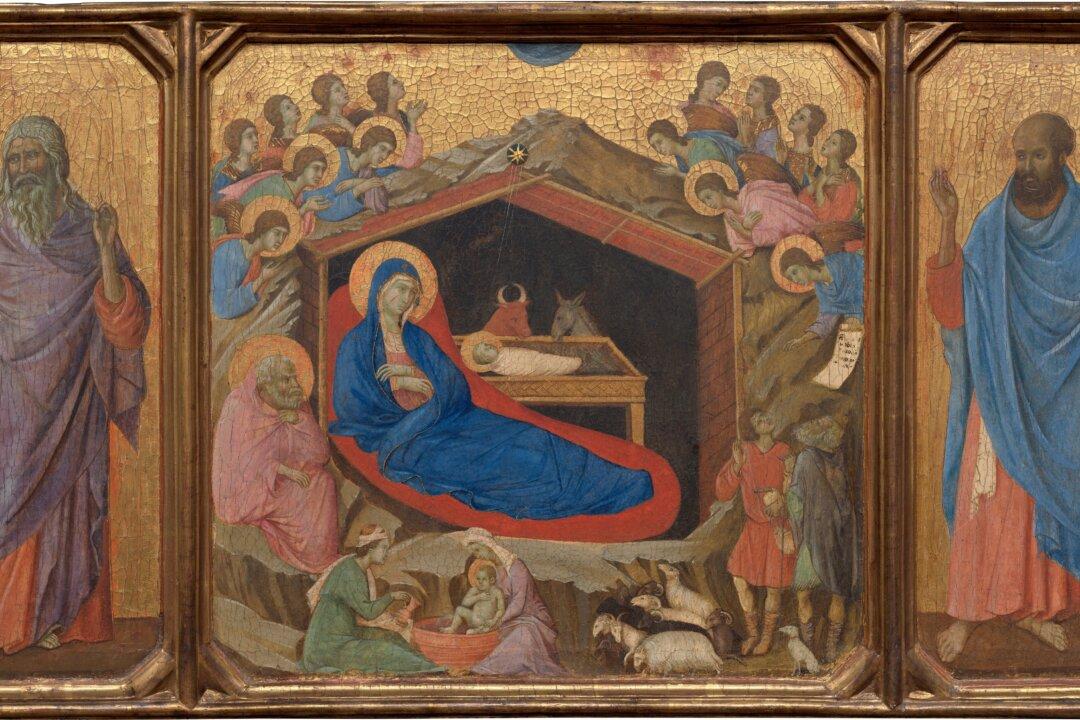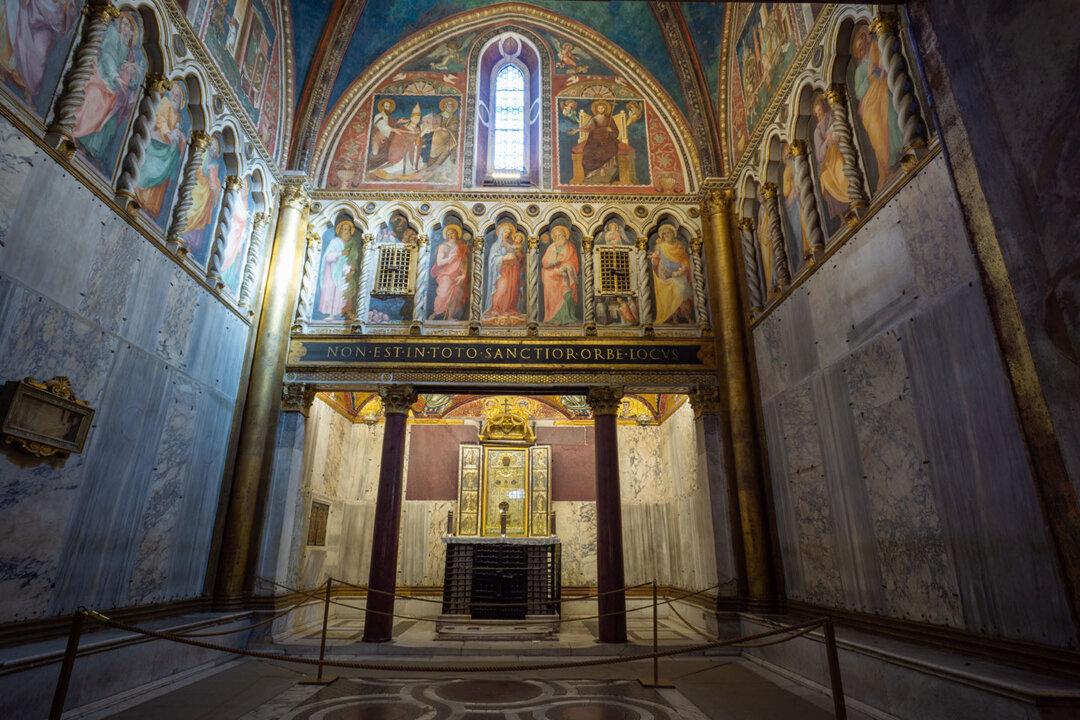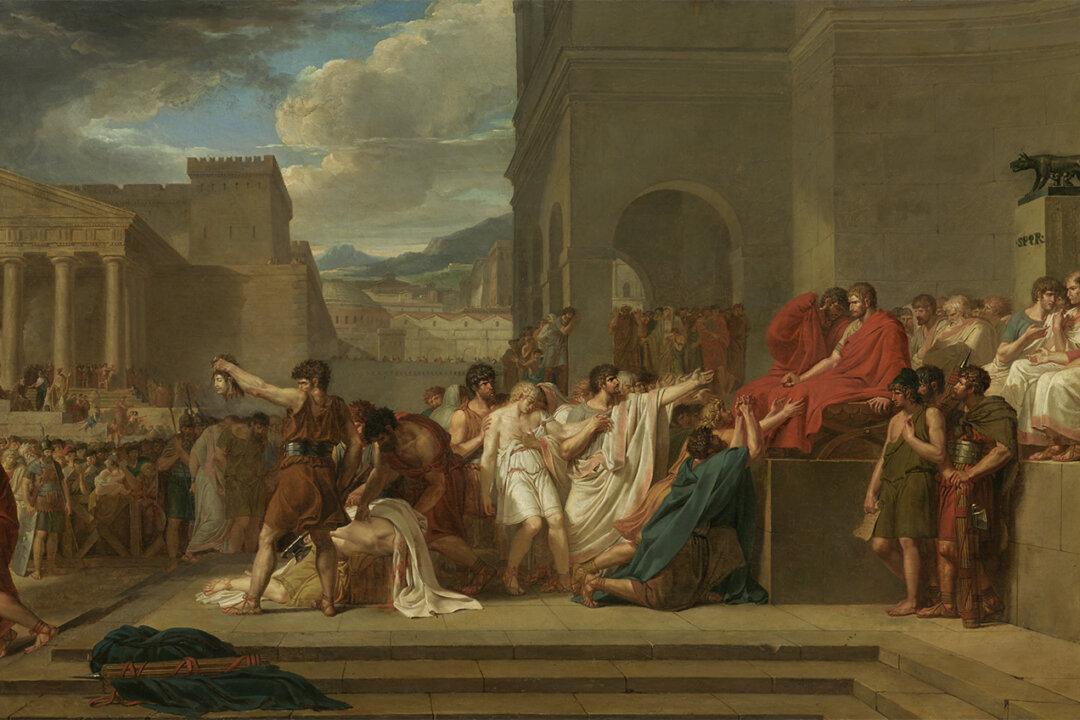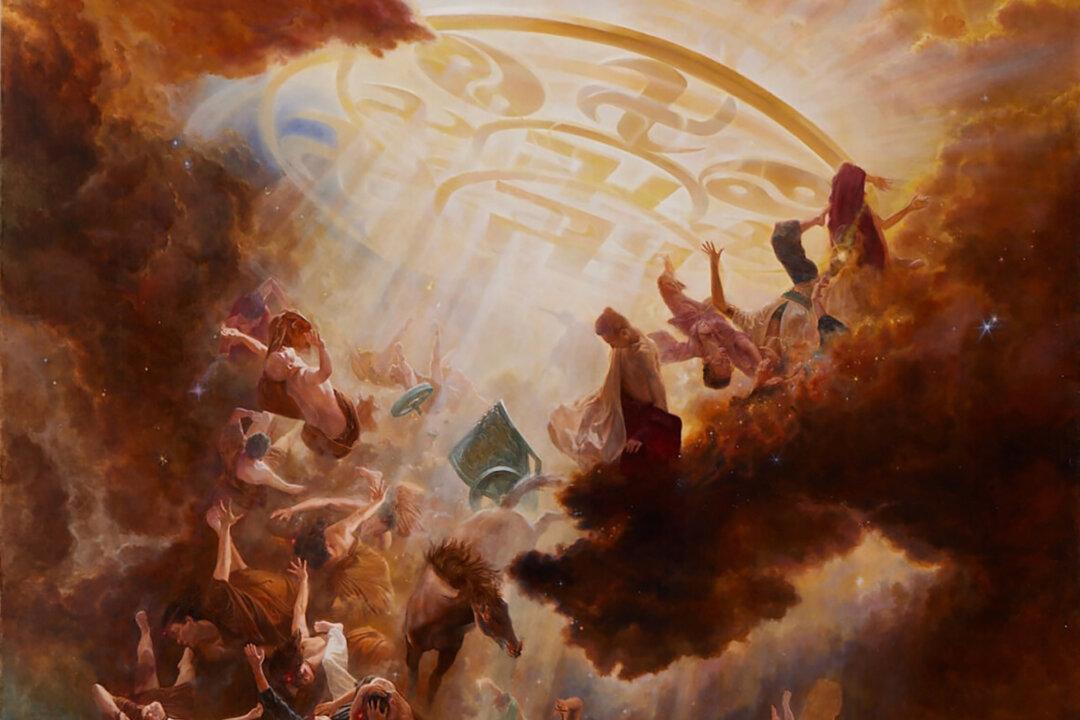There seems to be something quite universal about the image of a mother and child. For over 3,000 years, from ancient Egypt to Europe and beyond, artists from every culture have shown mothers carrying, protecting, and nourishing their children in a variety of contexts.
Though rendered each according to its own cultural standard, these works of art nevertheless convey the shared human experience of maternal nurture and love, which provides the bond that gives us life and, for all of history, has ensured the continuity of our world and its cultures.

Where this motif became most popular was certainly medieval Europe. From churches to palaces, devotional icons and altarpieces filled the everyday life of Christians, providing lessons about the Christ child and his holy mother.
In fact, many believed that these were more than just pictures; rather, they were the real presence of the divine on earth. Such panels with ground gold in the background were thus placed on altars and shrines, and even carried in religious processions.
Initially, most of these paintings followed a standard, iconic formula without much alteration. But toward the 13th and 14th centuries in Italy, some artists became more sensitive to the emotional charge of divine images and began experimenting with the deep feelings embedded in religious painting.
Duccio di Buoninsegna (1255–1319) was one extraordinary example among these artists. Active in the city-state of Siena, he stood out as one of the greatest painters of the Italian Middle Ages. In his works, such as the painting “Madonna and Child With Two Angels” made for a church in Crevole, Italy, we see a tender sensibility in how he chose to visualize the theme of divine compassion.
The Virgin’s face, brightly lit from above, leans intimately toward Christ, whom she presents to us with her right hand. Her eyes gaze outward, as all her sorrowful emotions are subdued by a reigning peace. Medieval pictures of the mother and child theme often show Mary with an expressive sadness, for she already knows that her son is destined to suffer for the salvation of mankind.

But in Duccio’s case, Mary’s sorrow seems balanced by a higher understanding of the ultimate purpose of Christ’s suffering. So she endures the pain, making almost as much a sacrifice as he did. The Christ child conventionally holds his hand in a gesture of blessing; but here, instead, he reaches up to his mother’s face as if wiping away her tears. This touch of great humanity contrasts and complements well with his steadfast gaze, which evinces a sense of conviction about the mission of his worldly journey.
Duccio’s earlier paintings eventually led to his masterpiece, the “Maestà,” a polyptych completed in 1311 for the high altar of Siena Cathedral. Its large central panel depicts Mary and her child enthroned amid a host of angels and saints. Here, glorified alongside Christ, the Virgin appears majestic, extending her love from her own son to all of mankind.
Thus, Mary’s ultimate gift to the world, as Duccio shows in his paintings, grants us a privileged understanding of the great compassion and selflessness of a mother.







